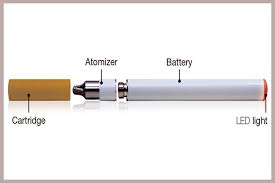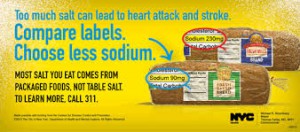 Electronic cigarettes, known as E-cigarettes, are non-flammable devices that deliver synthetic or tobacco-derived nicotine; they are similar in size, shape, and usage to their leaf tobacco counterparts. They are available worldwide through the Internet or increasingly in retail outlets.
Electronic cigarettes, known as E-cigarettes, are non-flammable devices that deliver synthetic or tobacco-derived nicotine; they are similar in size, shape, and usage to their leaf tobacco counterparts. They are available worldwide through the Internet or increasingly in retail outlets.
However, due to the lack of rigorous chemical and animal studies, as well as clinical trials on commercially available e-cigarettes, neither their value as therapeutic aids for smoking cessation nor their “safety” as cigarette replacements is established and remains speculative.
E-cigarettes consist of three integrated parts contained in a stainless steel shell: the mouthpiece (or nicotine cartridge), the atomizer chamber (or vaporizer), and a smart chip lithium ion battery. Typically, a disposable filter holds a cartridge containing synthetic nicotine dissolved in propylene glycol, water, and flavorings.
When the entire unit is assembled, the user creates an inhaling motion which activates the battery via pressure sensors. The battery powers the vaporizer, and the vaporizer heats the liquid housed in the mouthpiece. As such, the electronic cigarette is a delivery device for the addictive substance nicotine. The vapor released is polyethylene glycol (PG), which looks like cigarette smoke (also used for theatrical smoke) and is also an FDA-approved food additive. The volume released varies by brand, but when inhaled feels like cigarette smoke to users. Unlike tobacco smoke, the vapor quickly evaporates, leaves no remaining odor, but the secondhand smoke may still be irritating. Compared with conventional cigarettes, which last for about fifteen puffs, e-cigarettes can sustain 150 to 300 puffs, the equivalent of one-half to one pack of cigarettes. The cartridges vary in nicotine strength, being characterized as “zero,” low, medium, or high. Disposable, non-refillable versions, equivalent to one or two packs of cigarettes, also are available.
In tests conducted by the FDA’s Division of Pharmaceutical Analysis on two brands of e-cigarettes, additional ingredients were detected including diethylene glycol in one cartridge (a component of antifreeze and toxic to humans) and tobacco-specific nitrosamines (a known carcinogen) in half of the samples. This is very concerning and adds to the premise that such items should be closely regulated.
E-cigarettes were invented by an employee (Hon Lik) of a Chinese electronics company (Ruyan) headquartered in Beijing, which began marketing e-cigarettes in 2004. The Ruyan Group remains the leading manufacturer of e-cigarettes (sold as Ruyan® e-cigarettes), but additional manufacturers using similar devices have subsequently entered the market, offering their products worldwide via the Internet, in shopping malls, and other distributors. Prices for the devices (a charger, rechargeable battery, and five nicotine cartridges) range from about $80 to $150 with packages of replaceable cartridges, each good for several uses, costing $10 to $15 or the equivalent of 1 to 1.5 packs of cigarettes.
Per the CSAPH report, manufacturers of e-cigarettes have not submitted the requisite applications for FDA approval of these products for smoking cessation. And the Food and Drug Administration (FDA) has warned the public against e-cigarettes, saying they cannot be considered legitimate therapy for smokers to quit and that they could turn children into smokers.
Questions answered by Russell W.H. Kridel, M.D. as a public service to patients concerned about current health issues. All of the facts are gathered from published reports of AMA Council on Science and Public Health and approved by the AMA House of Delegates.
Read the AMA Council on Science and Public Health Report on “Use of Electronic Cigarettes in Smoking Cessation.”






